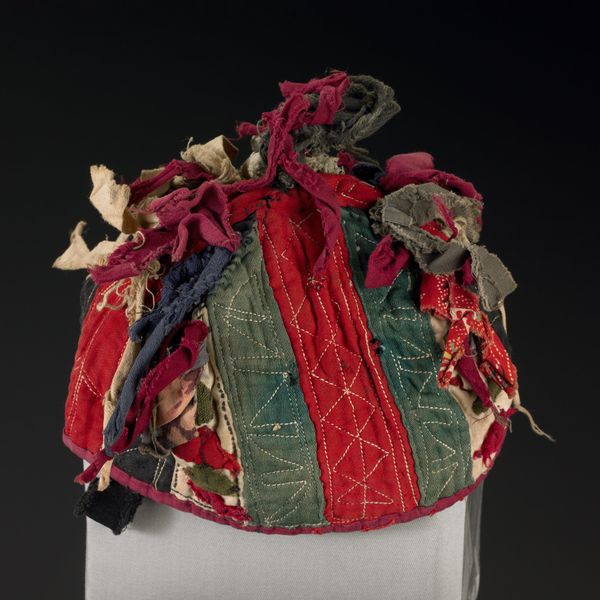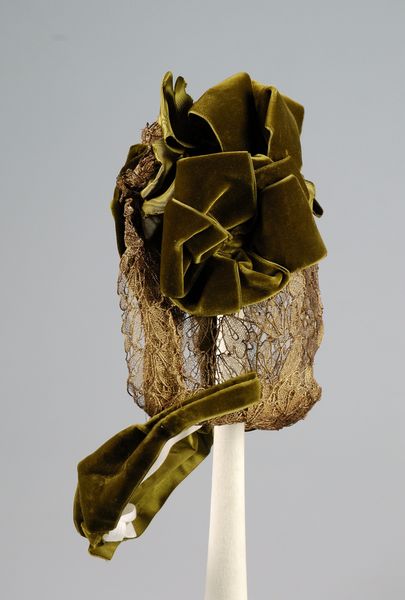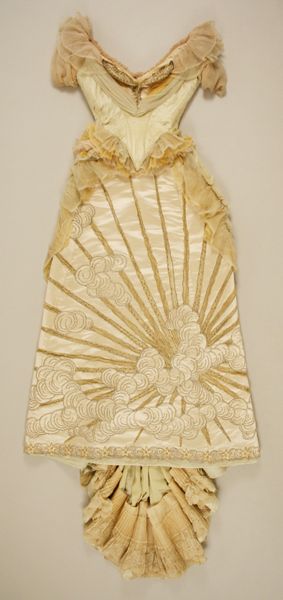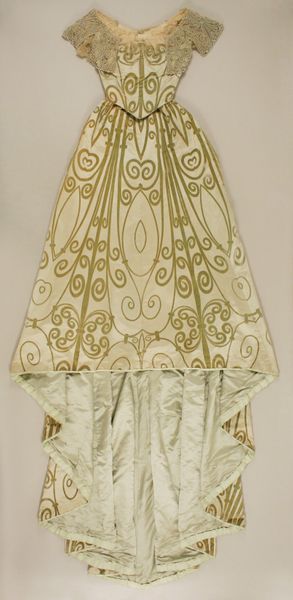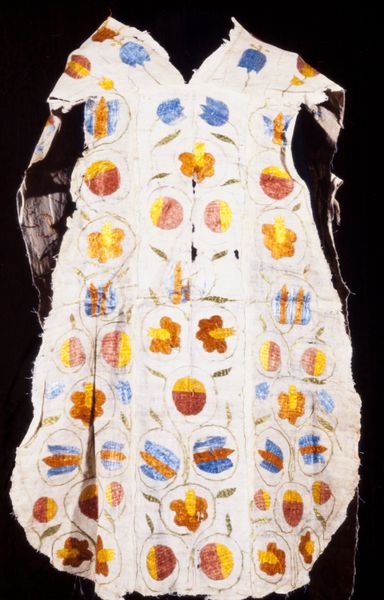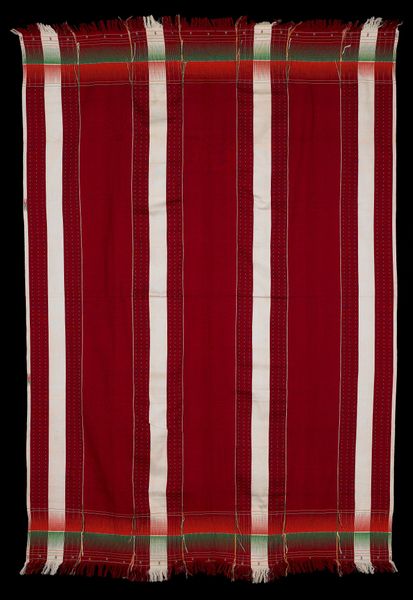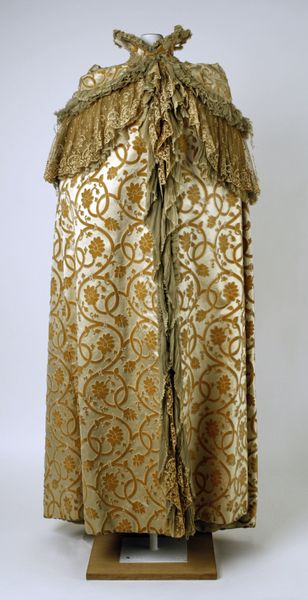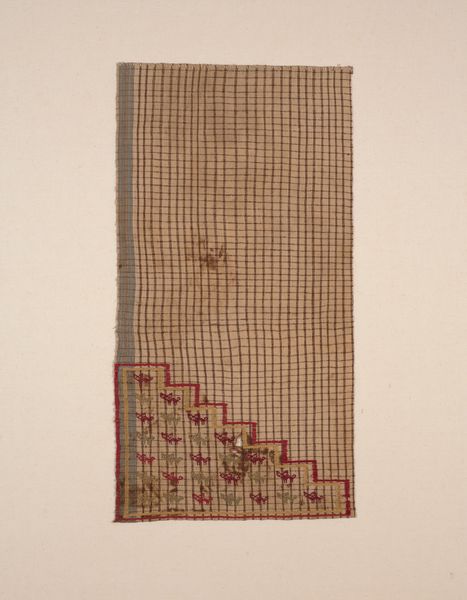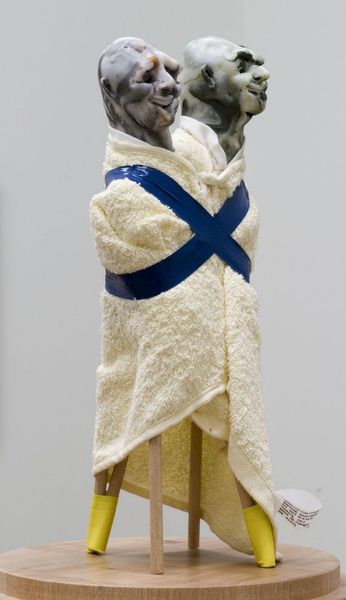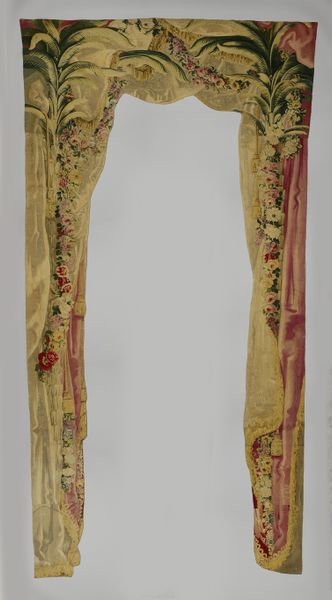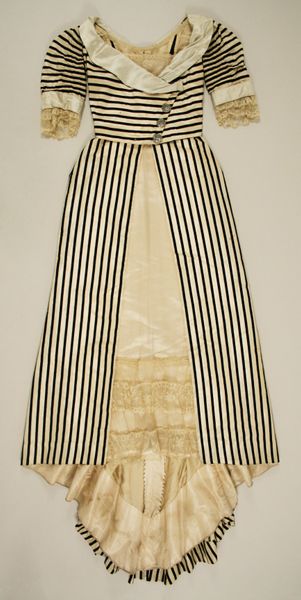
Rozen behorende bij de krans voor slachtoffers van het Japanse optreden tijdens de Tweede Wereldoorlog Possibly 2000 - 2022
0:00
0:00
fibre-art, assemblage, textile
#
fibre-art
#
assemblage
#
textile
Dimensions: width 45.5 cm, height 7.5 cm, depth 33 cm, length 20 cm
Copyright: Rijks Museum: Open Domain
Curator: Well, here we have what appears to be a poignant memorial object, created sometime between 2000 and 2022. It's titled "Roses belonging to the wreath for victims of Japanese actions during the Second World War." Editor: It's immediately striking – those drooping, withered roses juxtaposed with the rigid, almost formal arrangement of fabric. The red and white color scheme has an intensity, yet it feels so…despondent. Curator: It is a piece of fibre art, assembled with textile elements. I am curious about your understanding of what meaning this may convey. Editor: The roses, obviously, speak of loss and mourning. But the textile itself, with its red and white stripes and gold fringe—it’s almost like a disassembled or decaying flag. Perhaps signaling a fractured national identity or a failed promise of protection? The materials used - those machine-made textiles combined with natural, decaying elements - create a powerful tension between industry and nature, between official remembrance and individual grief. Curator: Exactly! The assemblage aspect is key. Think about the labor involved – sourcing the materials, manipulating them, the act of combining disparate elements into a unified whole. Someone, or a collective, actively chose these materials to create a specific effect. That act of production is itself part of the memorial process. The textiles also evoke historical precedent for banners and awards handed out. There may be institutional connection for their choice, maybe referencing similar pieces used within institutions, that give them deeper historical relevance. Editor: So, it’s not just a passive reflection on the past, but an active engagement with it, through the labor of creation and the use of everyday materials elevated to the status of memorial? And by displaying it in the current time we are forced to revisit old wounds. Curator: Precisely! The artist seems to be asking us to confront the lingering material traces of historical trauma, forcing us to see how such political violence is constantly remade and re-contextualized through physical objects, like fibre and botanical matter. It creates something tangible out of terrible absence. Editor: I now see it not as despondent, but deliberately unsettling. By contrasting the formal ribbon with dying roses, this memorial rejects any easy reconciliation, and lingers with uncomfortable truths and emotions about victims lost in WW2. Curator: Agreed. There is a visceral power in how those decaying flowers remind us of a loss, of an end.
Comments
No comments
Be the first to comment and join the conversation on the ultimate creative platform.
